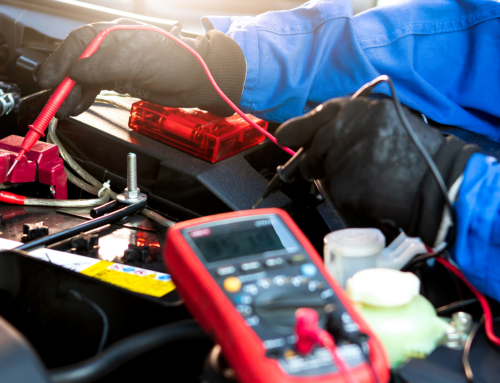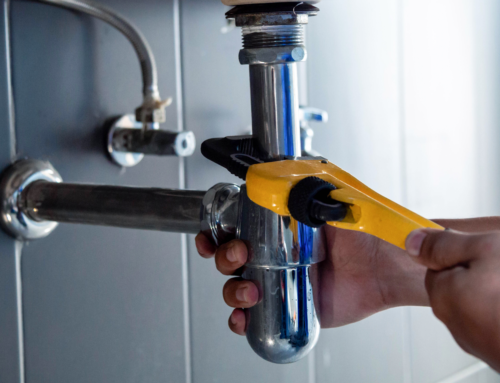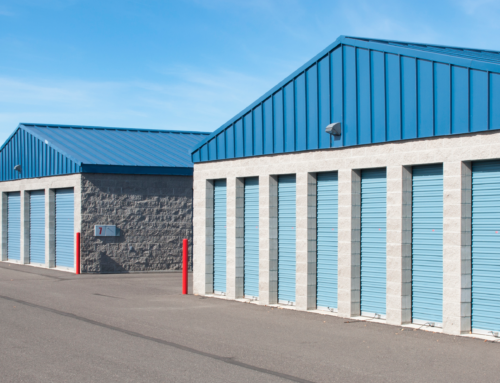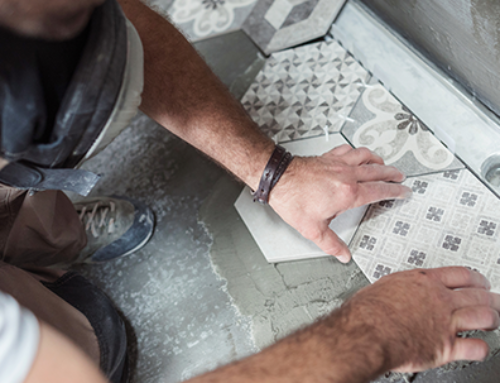As a contractor, subcontractor, or professional in the skilled trades working on or managing a construction site, there are a lot of moving parts you are responsible for. This can leave you and your business liable for things that could go wrong, such as theft, injury, and damage to property or equipment.
Recent changes introduced by the Canadian Construction Documents Committee (CCDC) require contractors to increase their general liability insurance from $5 million to $10 million to cover higher hazard liability risks (such as plumbers faulty workmanship on piping systems, resulting in water damage). To help your business understand how the risks have evolved and what to do to help prepare for them, we created this whitepaper. You can use it to help re-evaluate your current risk management strategy and strengthen business continuity planning.
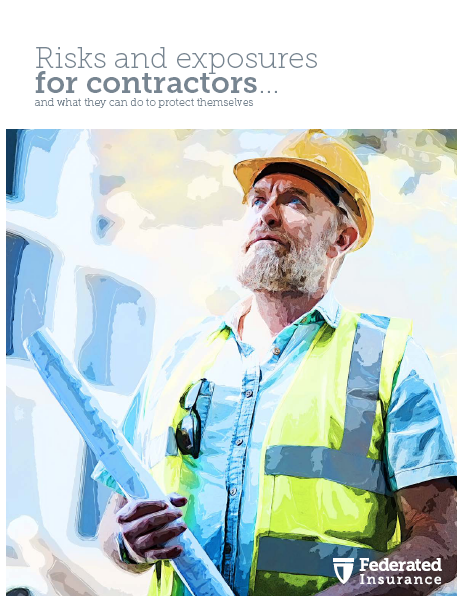 [Download our whitepaper on risks contractors face]
[Download our whitepaper on risks contractors face]
Types of risks for contractors
Contractor Fleet and Equipment Management
If you’re a smaller contractor, you may use vehicles that are taken home at the end of the day, which exposes you to risks that are different from a general construction company. You might be using pickup trucks or cube vans, which are not commercially rated vehicles.
Regardless of the scale of your operation, it’s important to ensure your vehicles are parked in a safe location — particularly if there are thousands of dollars of tools or materials inside. You’re responsible for those tools or materials, as well as any equipment on the back of a vehicle. For example, if a truck has pumping equipment in the back, you may need to store the vehicle inside during the winter months to ensure the water doesn’t freeze and damage the pumping equipment.
Hiring drivers
A professional driver is hired specifically for their driving skills and are provincially regulated. A subcontractor or tradesperson may be required to drive as part of their job (such as driving materials to and from a jobsite) but are not necessarily hired for their driving skills.
This is an issue for a lot of contractors, says Fred Muldowney-Brooks, Vice President of Risk Services at Federated Insurance, because a tradesperson might be excellent at their job but have a terrible driving record. Regardless, from an insurance perspective, the contractor will end up paying for any losses, so you need to take the person’s driving history into account.
Contractors should also consider regularly updating their list of drivers, and tradespeople who are no longer employed should be removed from the schedule to limit extension of coverage. You can also assign a tradesperson to a two-person team or crew if they are not comfortable driving.
Subcontracting risks
Falls
Training should be provided for all contractors on site working on towers, bridges, and other elevated structures. If you’re a smaller contractor or subcontractor hired to do a job on an elevated structure, make sure that certain protections are in place to help prevent falls.
Confined spaces
A confined space is any space where a dangerous atmosphere may develop, such as a storage tank, sewer tunnel, or underground vault. Too much oxygen in a confined space will increase the risk of fire, yet too little oxygen will cause suffocation. If you’re going to be working in a confined space, ensure that the atmosphere is tested and monitored as part of an overall safety plan.
Fire prevention
If you work in a shop or yard, it’s important to ensure there are smoke and fire detection devices and portable extinguishers on site. The area should also be illuminated with floodlights at night and enclosed with fencing. Packing materials, combustibles, and explosives should also be stored at a safe distance from buildings and stores. Combustible material should be marked clearly and stored separately. Packing materials, combustibles, and explosives should be stored at a safe distance from buildings and stores.
The regular use of hot work, which is any process that uses or generates open flames, sparks, or heat, such as welding, cutting, or brazing — poses a very high fire risk. Hot work losses often occur because of negligence, lack of or improper training, and absence or non-adherence of strict hot work safety guidelines and protocols. It’s important to put the necessary controls, protocols, and practices in place to minimize the risk of loss.
Theft of tools, materials, equipment
Tens of millions of dollars worth of tools and equipment are stolen each year in Canada, and this statistic continues to soar. Theft can cause a delay in completion of a project due to the loss of specific or unique equipment which can increase project costs and trigger late penalties.
While not all thefts are preventable, contractors can make it more difficult for thieves to steal their tools and equipment by doing things like using identifying marks on tools (numbers or a company logo) and tracking vehicles or equipment with a GPS device, transponder, or RFID (radio frequency identification technology).
Record-keeping
Record-keeping for a contractor means having a current inventory and detailed record of all tools and equipment used on project sites. It’s a way to manage and track inventory, which is particularly helpful when working on multiple job sites using shared resources (and helps determine if you need to purchase or replace anything).
There are third-party services that can make this process easier, such as the Tool Inventory and Appraisal System (TIAS), which provides an up-to-date inventory of all the tools in your shop, estimates the value and condition of the tools, and helps determine whether you’re over- or under-insured.
Recovering stolen equipment
Property marking systems, such as MicroDOT, allow you to mark your tools and equipment for identification and authentication. MicroDOT, for example, chemically etches a tiny serial number the size of a pinhead, invisible to the naked eye, on a tool or piece of equipment. While it doesn’t prevent these items from being stolen, you can prove that they’re yours if recovered.
Contractors may want to consider registering their equipment and reporting any theft to Crime Stoppers, the manufacturer of the equipment, as well as the police.
Liability
Many losses, liabilities, and subsequent insurance claims are often not the result of a contractor’s negligence on a project, but simply because, when an incident occurs, the contractor cannot provide the required details of work performed, materials purchased, or documentation to verify work performed by sub-contractors. That’s why due diligence is so important.
But due diligence also involves training employees, retraining employees, and providing proper supervision for apprentices. As part of this, consider implementing a health and safety program that follows specific documentation practices, procedures, pre-site inspections and quality control.
Infection control
In April 2020, the Canadian Construction Association (CCA) developed COVID-19 – Standardized Protocols for All Canadian Construction Sites for all construction sites across the country, and it is updated as best practices emerge. Part of this protocol involves taking a multi-faceted approach with rigorous hygiene and cleaning practices, changes to the physical environment, and new behaviours by employees. It also requires developing a response plan based on government and industry best practices, which is then communicated to all employees, including subcontractors and tradespeople.
Cyber risks
The rise of new technology is changing the way construction companies and contractors operate. For example, many contractors are using Building Information Modeling (BIM), project management software, and autonomous vehicles to find efficiencies in their day-to-day operations. Integrated robotics can assist in builds, drones can monitor jobsites, and the Internet of Things (IoT) can be used to track equipment.
But the adoption of this new technology has presented new opportunities for hackers to steal your valuable data. If you use a computer system — regardless of how often, its size, or its sophistication — your business could suffer an attack. The more technology you use, the more vulnerable your business could become to things like ransomware, spear phishing scams, cyber fraud, and digital hijacking. As construction and contracting technology is used more frequently on and off site, those risks will continue to grow.
Reliable coverage can help protect your business
Knowledge of the risks contractors can face and steps to take against them are vital. But before you commit to a project, it’s also important to make sure your business has reliable coverage in the event of an incident. Our team of industry experts can help tailor a solution that is in line with your contractual obligations and other unique needs. Visit our Contractors Insurance page to learn more!
This blog is provided for information only and is not a substitute for professional advice. We make no representations or warranties regarding the accuracy or completeness of the information and will not be responsible for any loss arising out of reliance on the information.

